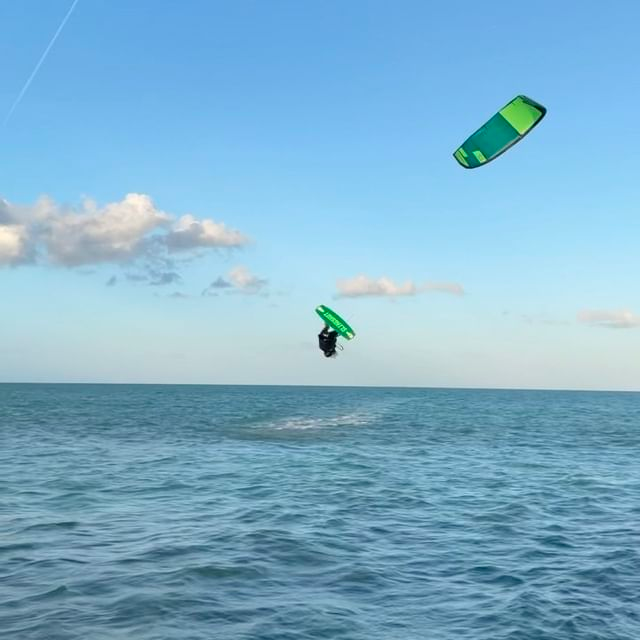Mastering the Wind: Gear Essentials and Comfort Tips for Advanced Kiteboarding Lessons
Tarifa’s winds call to seasoned kiteboarders ready to elevate their skills. This guide covers must-have gear and practical comfort tips, ensuring you harness the raw power of wind and wave safely and with confidence.
Check Wind Forecasts Regularly
Monitor local meteorological updates before heading out to avoid unexpected gusts or lulls that could compromise your safety and lesson effectiveness.
Prioritize a Comfortable Harness Fit
Invest time in adjusting your harness; a snug but not restrictive fit enhances control and reduces fatigue during longer sessions.
Hydrate to Combat Salt and Sun
Keep water nearby and drink consistently to offset dehydration caused by wind and sun exposure.
Wear Layered Neoprene
Use a wetsuit with flexibility and consider rash guards beneath for chafe-free comfort during extended lessons.
Mastering the Wind: Gear Essentials and Comfort Tips for Advanced Kiteboarding Lessons

Advanced Kiteboard Lesson
Up to 3 hours • Ages 8+ • One-to-one instruction for 1 person
Looking to push your kiteboarding skills? The Lagoon in Marathon offers tailored advanced lessons designed to challenge and inspire experienced riders. Discover how personalized instruction on the warm waters of the Florida Keys can take your skills to new heights.
Advanced kiteboarding is a thrilling dance with wind and water that demands precision gear and smart preparation. When you're ready to push beyond the basics, the right equipment ensures safety, comfort, and control as you harness stronger gusts and sharper maneuvers. First, your kiteboard choice is critical. Opt for a board slightly bigger than your beginner model—this boosts stability on choppy water and supports more aggressive turns without sacrificing responsiveness.
A well-fitted harness transforms your ride by distributing pull evenly, reducing arm fatigue and letting you carve deeper. For advanced lessons, a seat harness is often preferred over a waist harness, offering better lower back support and enhanced power transfer. Don't overlook the importance of a reliable, quick-release safety system—it must be finely tuned and tested before you hit the water.
Wetsuits become your second skin in variable climates; pick one with flexible neoprene panels and reinforced knees for freedom of movement and protection against board bumps. Layering with a rash guard inside improves comfort and helps prevent chafing during long sessions. Footwear matters: neoprene booties with a textured sole will guard your feet and improve grip on slippery surfaces in launch zones.
Comfort on land sets the tone for performance. Pack windproof jackets, early morning or late afternoon lessons require durable gloves to prevent blisters. Hydration is vital—salt air and sun can drain you faster than expected, so carry a reusable water bottle and plan breaks onshore. Sunscreen isn’t negotiable; reapply frequently as water reflects intense rays.
Before your lesson, check weather conditions closely. Winds between 15-25 knots are ideal for advanced training, but be mindful of gusty or lulls that test your control. Launch and landing spots can be crowded or uneven, so arrive early to claim space and scan the water for currents that dare to pull you off course.
In sum, gearing up for advanced kiteboarding lessons means merging technical essentials with comfort-focused details. The wind is fiercely itself—resist the temptation to rush. Respect its moods and prepare carefully to elevate your skills safely and enjoy every exhilarating glide.
Nearby Trips
All Adventures
Boat Charters
Water Activities
Adventures near Tarifa
Discover the unique and memorable adventures that make Tarifa special.
Frequently Asked Questions
What wind conditions are best for advanced kiteboarding lessons in Tarifa?
Winds consistently between 15-25 knots offer the perfect balance for advanced riders, providing enough power to execute complex maneuvers without overwhelming control.
How can I ensure my safety kiteboarding in stronger winds?
Always double-check your safety release systems, adjust your harness properly, and never kiteboard alone. Staying aware of wind shifts and practicing emergency release drills are crucial.
What should I wear under my wetsuit during lessons?
A fitted rash guard or thermal layer minimizes chafing and improves comfort during long sessions, especially when water temperatures drop.
Are there local regulations I should know about kiteboarding in Tarifa?
Yes, certain beaches restrict kiteboarding during high tourist season or near swimming zones. Consult local kite schools for designated launch zones and times.
How do tides affect kiteboarding conditions here?
Tides influence water depth and current strength. Low tide exposes more rocks and hazards near launch areas, while high tide often brings stronger currents—planning by tide charts is advised.
Is there a best time of day to practice advanced tricks?
Mid to late morning sessions often have the most stable winds with less chop, enabling better focus on honing technical tricks safely.
Recommended Gear
Advanced Twin-Tip Board
Offers the control and agility required for more aggressive moves and powerful wind ranges.
Seat Harness with Quick Release
Distributes pull comfortably and increases control, while the quick-release improves safety.
Flexible Wetsuit with Reinforced Knees
Protects against cold water and sharp board edges while allowing full range of movement.
Neoprene Booties
Provide foot protection in rocky launch areas and added grip on slippery surfaces.
Local Insights
Hidden Gems
- "Punta Paloma dunes – a less crowded launch spot with expansive beach views"
- "Estrecho Natural Park – offers wind corridors favored by locals"
Wildlife
- "Seabirds like gulls and terns glide alongside wind currents"
- "Dolphins occasionally ride the waves, hinting at the ocean's lively mood"
History
"Tarifa’s rich maritime history includes centuries-old fishing traditions and strategic importance guarding the Strait of Gibraltar, blending culture with the elements you now ride."
